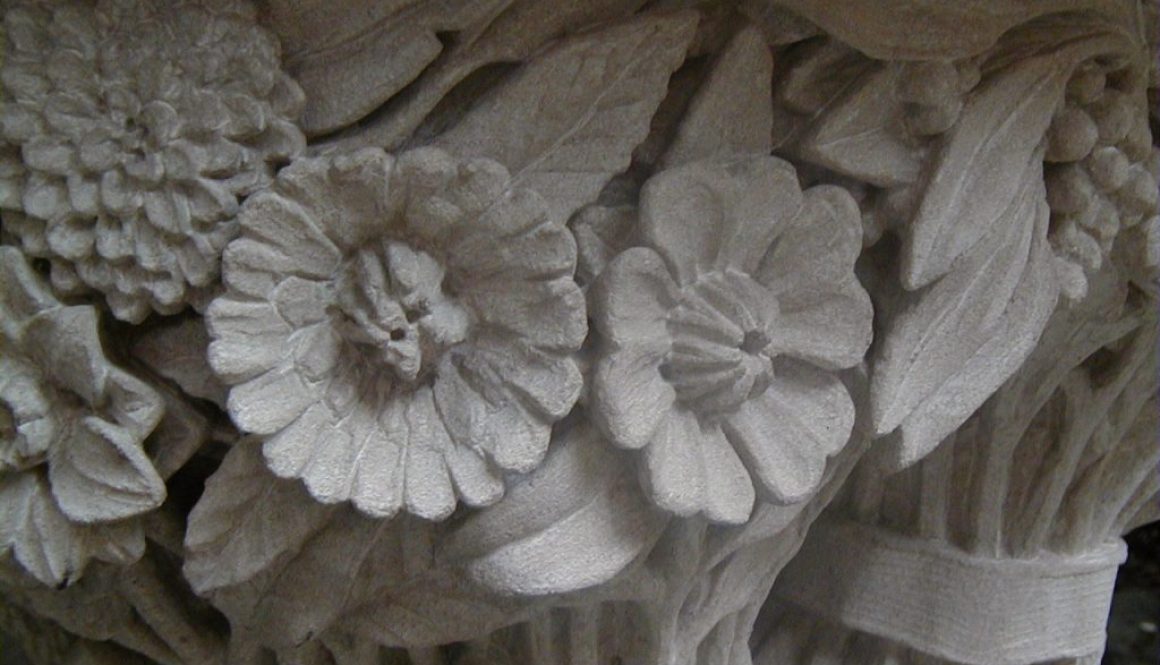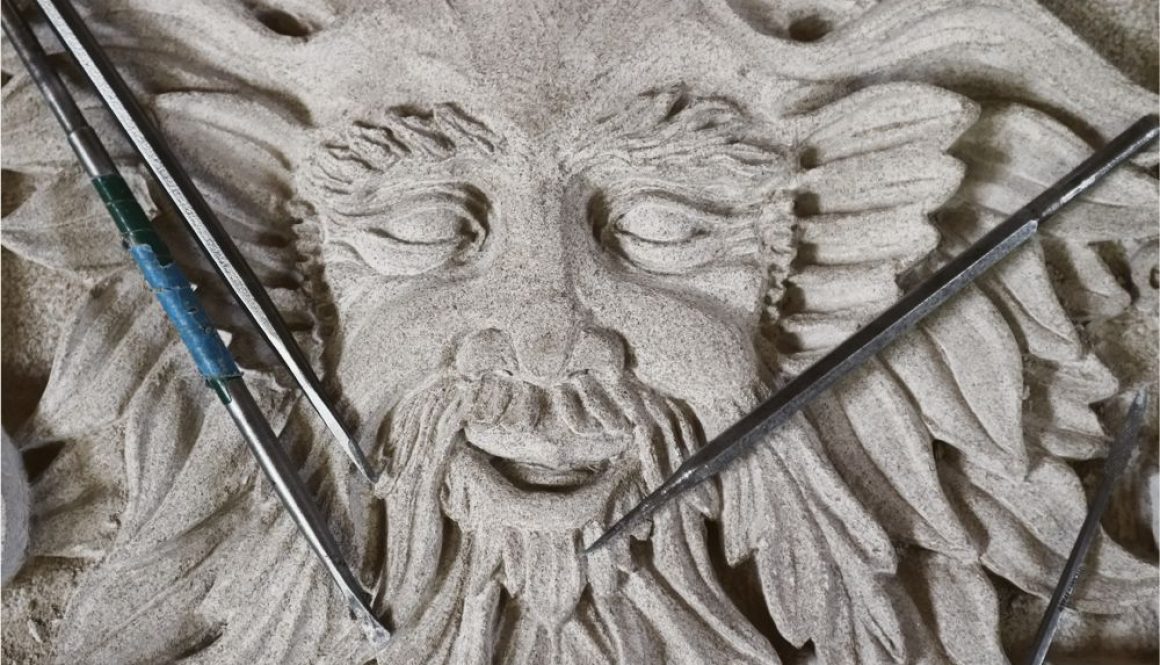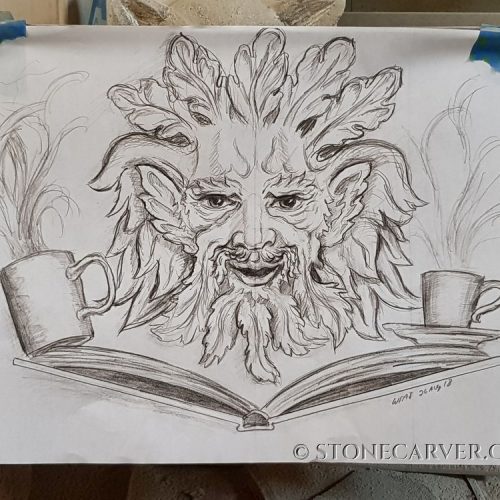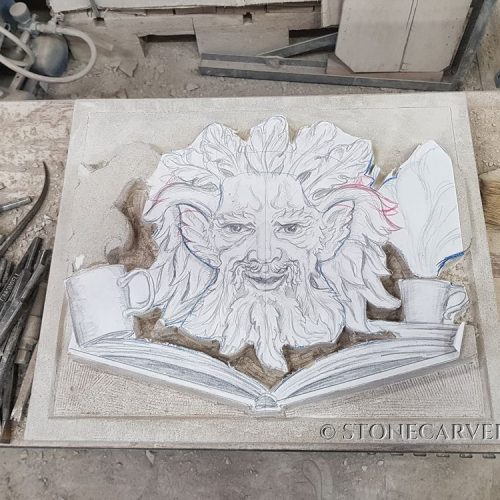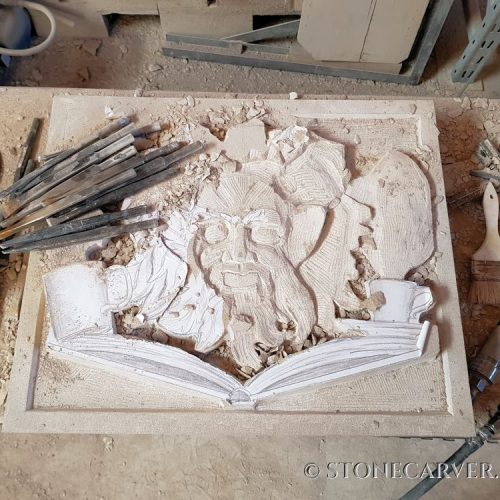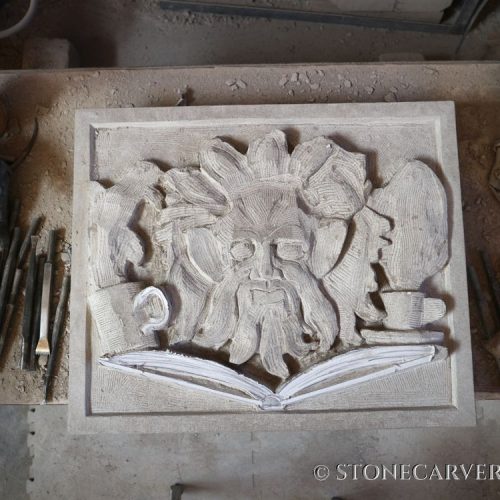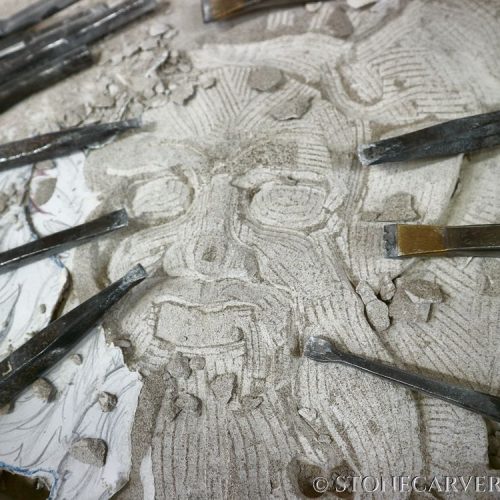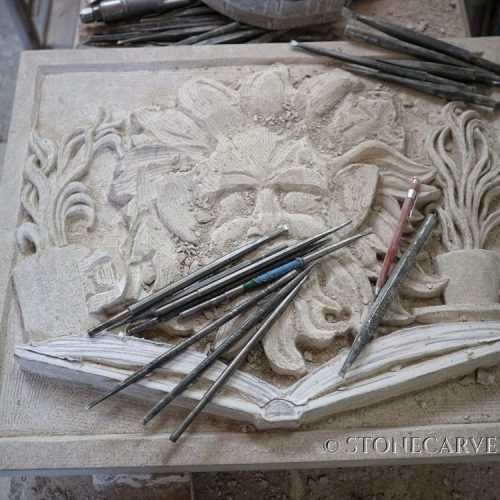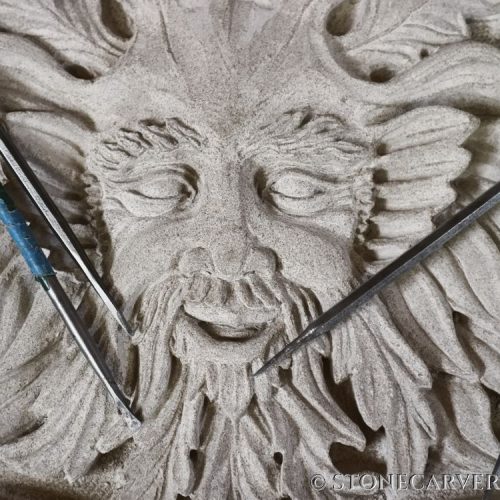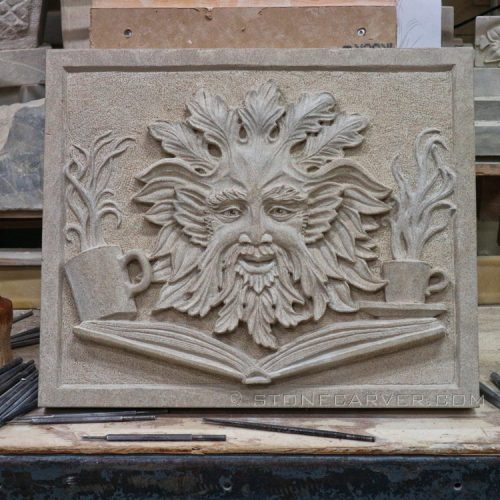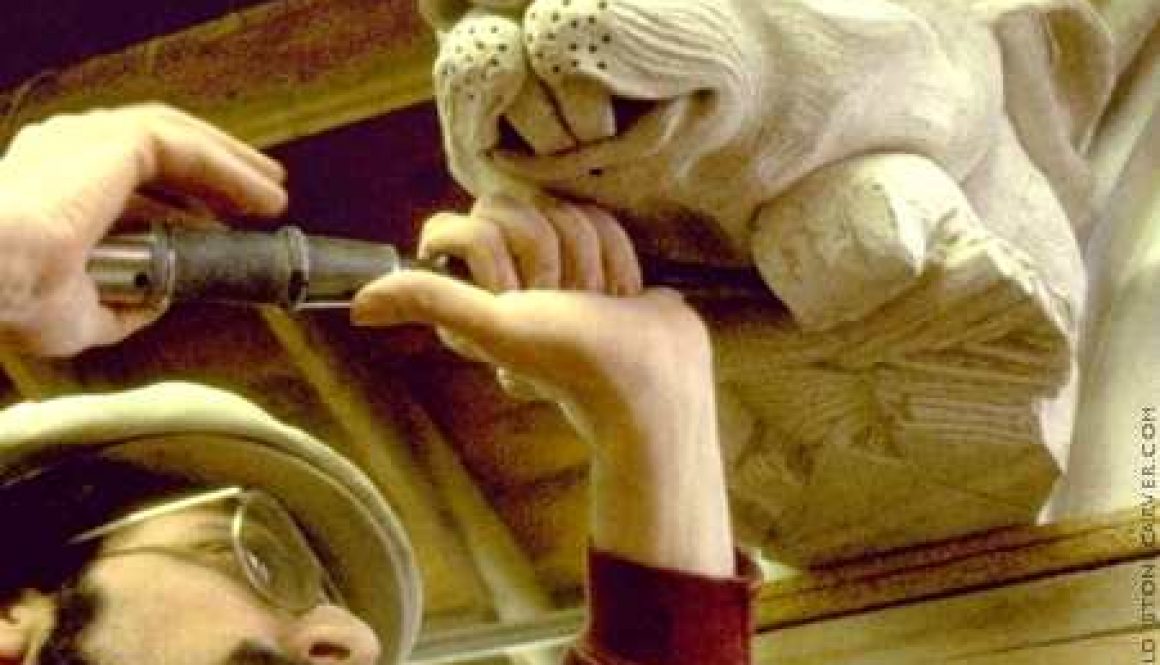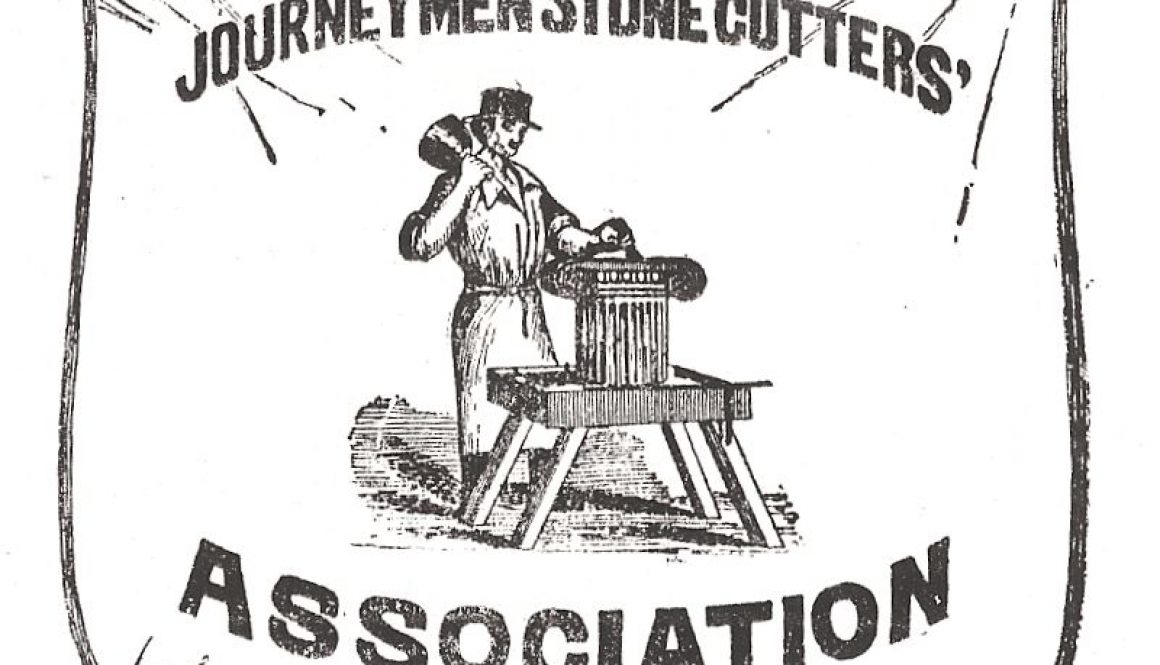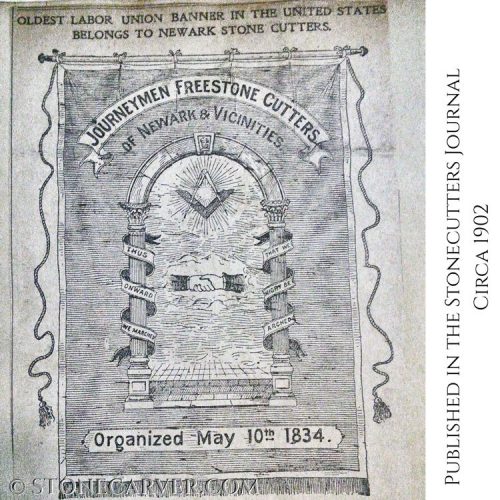Teachers Q&A
Questions from students and teachers.
I have often received questions from students and teachers, asking about gargoyles and sculpture. Here is a collection of some of these questions and my answers. Feel free to print them out and use them in your classrooms. You are welcome to e-mail your questions if you notice anything that I missed.
What do gargoyles look like?
Every one is different. They are often based on animal or human forms, but exaggerated or distorted.
What are they made of?
Traditionally they are carved out of stone, and built into stone buildings like the old castles and cathedrals of Europe. There are some made of terra cotta (which is a form of baked clay), copper, and other materials.
What are some of the legends about gargoyles?
In general, I think most of the stories and myths were created “after the fact”. The most common belief is that they are protectors, keeping evil away from the buildings and their occupants. But is this really why they are there? We really don’t know. At the time the medieval gargoyles were carved, there was very little written documentation created; particularly not by the carvers. They documented their work and told their stories with chisels and sculptural forms, not with pens and words. The choices of design and imagery would certainly be heavily influenced by the current local myths and legends, but also by the individual mood and imagination of the artist. Any original legends have probably been lost or so changed over time as to not tell anything about the original motivation. In recent years people have invented some new “legends” and claimed that they are old stories, but I do not know any authentic 800-year-old legends about them. There are some very good books on the subject. I have more information on my About Gargoyles page and a bibliography on my Gargoyle Books page..
How small can they get?
The real ones on buildings have to be large enough for people to see them from a distance, but I’ve seen some small creatures carved on buildings that are only a few inches high. I have one that is only 1-1/2″ tall hidden on the front of my studio.
How are they put on buildings?
They are built into the building the same way other stones or bricks are put in. A stonemason uses mortar and sets one stone on top of another. Often the stone will be tied back to the inner wall of the building with stainless straps or other types of anchors.
What tools are used?
Mostly hammers and chisels. The hammers can be iron or steel, or wooden mallets. Pneumatic hammers (powered by compressed air) were invented over 100 years ago and are used extensively for carving now. The chisels are made in many different shapes, so as to cut the stone in different ways. I have more information on tools and carving techniques on my Stone Carving-Tools Of The Trade page and I discuss the tools and the carvers in my book, Staglieno – The Art of the Marble Carver.
Where do you get ideas?
A combination of study and imagination. I have lots of old books, some over 150 years old, with pictures of gargoyles. These give me ideas, and I do a lot of drawing. I like to travel, and I’m always looking around me, at buildings, trees, animals, and sculpture, collecting ideas and inspiration. Some I make things up as I go along, like doodling. Leonardo da Vinci suggested staring at peeling paint on an old wall, after a while you can start imagining faces in the shapes on the paint.
What are some styles?
Gargoyles were most common in Gothic architecture, and blend with that style very well, but I’ve seen many in other styles, ranging from Baroque and Romanesque to Art Nouveaux and Art Deco. You can find similar forms in other cultures and in non-Western architecture.
Why are they popular?
I think they appeal to our imagination and the subconscious. They take human characteristics, exaggerate, change them, blend them with animal characteristics, so they can symbolize any aspect of our personalities. Humans are differentiated from the animals by our imagination, creativity, humor, and an appreciation of art. Gargoyles fit in that realm, and are part of what make us human. Artists can express humanity and emotion in a creative fashion by using distorted or fantastic forms.
How long have you been making them?
I started drawing this sort of creature and making clay models when I was around 6 or 8 years old, and started carving stone when I was about 12.
Why does it seem like there are no new buildings that incorporate animals?
A number of things, including builders and developers who don’t have much background in the visual arts, and aren’t that much in touch with aesthetics. The current view on budgets holds that you build a building in the way that is least expensive- but that is interpreted to mean least expensive up to the day the ribbon is cut. If it were built to be least expensive over the first 30 or 50 years of the buildings life, the decisions would be different, from the choices of carpeting and door hinges to the incorporation of ornament. At the turn of the century, carvers were the best paid of the building trades, with wages similar to what many lawyers of the time were paid. A major building would have 3 to 5 percent of the budget allocated to ornamentation, and 20 or 30 carvers might work on a project. Nowadays carving is viewed as too expensive, it’s considered extravagant to spend 1% of the budget on all the art, both ornament and art hanging on the walls. Also, people are afraid to express anything different. Ornamentation and design are now like elevator music- something to make a pleasant, soothing, non-distracting background, nothing that will offend or be controversial. Animal imagery is a dangerous gamble from the standpoint of the builders, developers and architects.
What do animals mean in a building in the cultural sense? Ornament only? Symbolism?
Both, but symbolism is less a factor now than it was a few hundred years ago. The language of symbolism is lost on most people. You have to stop, look, and consider what you are looking at to start learning the language.
Where do mythological animals (Gargoyles, Griffins, etc.) come from?
Why are they so popular in certain buildings (e.g., churches)? And why is it always the frightening ones in buildings, and not the neutral or friendly ones (e.g., unicorns or centaurs).
I’ve seen a lot of neutral ones, but the stronger the image the more effective the carving and design, so the frightening ones are more striking. Where do they come from?
Our imagination, our myths, dreams, whatever… they certainly strike a chord with a lot of people.
What is a “bestiary”?
Those were books written in the Middle Ages explaining the symbolism of animals. Each creature represented a different moral quality.
What animals are most commonly represented in architectural ornament?
Lions and eagles are the most common in American architecture, symbols of strength and power, and the Eagle is an American symbol. In other countries and cultures other animals are more common. For example, in ancient Egypt cats and snakes were very popular symbols.
Why is stonework apparently dying out in modern building practices? Is there any way it can rebound, the way stained glass has, for example?
Well, more difficult to rebound than stained glass, since it’s harder to learn and more difficult to do. Architectural styles and architectural education in the 50’s to 80’s was what nearly killed it, it’s coming back in to a limited degree. All the stone companies are very busy now, but mostly slabs and flat panels. Architects haven’t really been taught how to design with stone since the 40’s, so they’re not comfortable trying it.
Are you going to continue making gargoyles for the rest of your life?
Yes!
Have you ever fallen into a creative slump? If yes how did you get out of it?
Everyone does. Just do something different, break the routine. Visit a museum, take a day off, do a quick little piece that is completely different. Usually it is due to being stuck with a problem/design issue that I can’t resolve in a project, so I need to step away, then come back and work it out.
Do you have a favorite gargoyle that you have made?
There are a few that I especially like. One is my votive candleholder. When I worked on the Washington Cathedral they used huge bees wax candles, about 2″ in diameter and 3′ high, for processions. When those candles had burned down to only a foot or 18″, they were considered candle stubs, and I was given a number of them. I needed something to put them in, so I carved a creature- its a face, somewhat abstract, with goats horns and a long mustache. Both the horns and the mustache are very fluid, and wrap and writhe around the head. This piece is different from what most people expect out of stone, because it is so fluid. I make cast reproductions of this piece, which are available in my Gargoyle Store.
Do you use any certain animals for your gargoyles?
Sometimes. I carved a grotesque owl recently. Usually I let the gargoyles develop their own faces and personalities, without consciously basing them on anything.
What materials do you use to carve?
I usually work with Indiana Limestone, quarried in Southern Indiana. I also use Italian Marble, Kansas Limestone, and a few other marbles and limestones. I also make cast reproductions of some of my pieces, and sell them in my Gargoyle Store. To make a cast first you make a mold of the original. The mold can be rubber, plaster, or other materials. Then the casting material is poured into the mold. My casts are in a durable resin, which reproduces the detail nicely. Other popular casting materials include plaster and cement.
Do you also work with clay?
I will sometimes use clay when I’m doing a model that I need to change and modify, or when I’m trying out different ideas for a design. I don’t really use clay much- its very different from stone. With stone, you start from a block and cut back, with clay you build up. It is the opposite way of working and of visualizing your work. When I do use clay, I generally build it up and carve it back, which is not the way most sculptures work.
What is one of your biggest sculptures?
One would be the Turtle fountain I carved. The turtle stood 3-1/2′ tall and weighed 1800 pounds when it was finished. Another is one of the pieces I did for restoration of the Chicago Tribune Tower, (there is a picture of it on my architectural ornament page, just to the right of the shot of me sitting on a Corinthian column capital) was about 2500 pounds when finished. There is a small grotesque on it reading a newspaper. The entry panels I did for the Helen Brach Primate House at the Lincoln Park Zoo consisted of about 22 pieces of stone each (I did two sets, for the North and South), totaling about 12 or 14 feet high. Each one had two carved panels with monkeys. The panels were 6′ x 2′.
When you went to Italy for training, what else did you do?
Well, I lived there a few years, so I did whatever you do when you live somewhere. Made friends, sat in cafe’s with other sculptors and carvers talking about art, traveling, drawing. I also visited a lot of museums, old churches, mountain villages, graveyards, and other beautiful places.
Any pointers for the teacher on teaching how to make gargoyles?
Have your students pick a single feature to exaggerate. Have them use different textures to animate the piece and give it more depth and life. Emphasize light and shadow. Those are what make a sculpture work- Just as when in carving an eye, instead of carving the upper and lower eye lid in a way that will physically duplicate the real thing, I try to duplicate the light and shadow. Therefore I’ll make the upper lid larger and the lower one smaller than they really are. Highlights and shadows are what we see when we look at sculpture, especially as we move further away or change angles. Hold up a piece in different light and move it around so they see the effect the shadows and texture give.
Gargoyles allow the freedom of playing around with the discipline and technique used in my other work. In a way they are like doodling- I can experiment, take chances, and have fun. If the human feeling, expression and emotion come through then the piece will be successful
